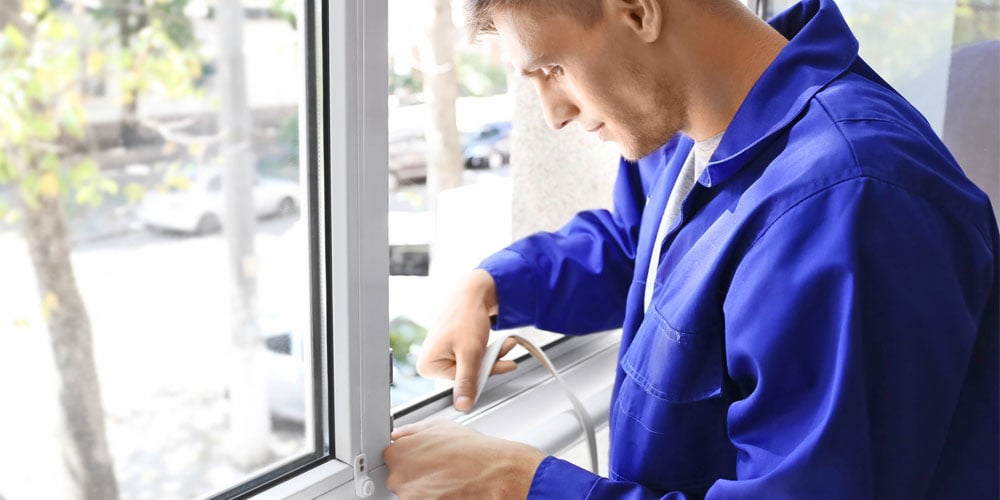DIY Home Energy Audit Checklist: Save Money and Increase Efficiency


Is your monthly energy bill skyrocketing, and you’re left wondering why?
Before you start calling in the pros, you can tackle the problem yourself by conducting a DIY home energy audit. A simple inspection of your home’s insulation, windows, HVAC system, and even your lighting can highlight potential issues that are wasting energy and costing you money.
Let’s walk through a DIY home energy audit checklist that’s easy to follow and will help identify common energy drains in your home.
What is a DIY Home Energy Audit?
A DIY home energy audit is a quick, cost-effective way to pinpoint areas in your home where energy might be escaping.
You don’t need specialized equipment or training. All it takes is a little time, a keen eye, and our step-by-step checklist.
By identifying energy-wasting areas in your home, you can save money on your monthly energy bills and make your living space more comfortable.
Why Conduct a DIY Home Energy Audit
- Save on Utility Bills: Finding and fixing issues can lead to significant savings.
- Increase Comfort: Eliminate drafts and inconsistent room temperatures.
- Reduce Environmental Impact: Lower your energy consumption to shrink your carbon footprint.
- Prevent Future Repairs: Identify potential problems early to avoid costly repairs down the road.
DIY Home Energy Audit Checklist
Now, let’s dive into the DIY home energy audit checklist.
Identify Air Leaks in Windows and Doors
One of the most common culprits for energy loss is drafty windows and doors.
These leaks let in unwanted cold air during the winter and hot air during the summer, making your HVAC system work overtime.
Here’s how to identify if you have an issue.
- Touch Test: On a windy day, feel around the edges of your windows and doors. If you notice a cool draft, air is leaking.
- Inspect for Condensation: Condensation between window panes indicates poor insulation.
- Check the Window Frame: Feel for any gaps or spaces between the frame and wall.
If you notice any of these signs, it might be time to upgrade to energy-efficient windows, which could save you 10 to 20 percent a year on energy costs, according to Energy Star.
Evaluate Your HVAC System
An outdated or improperly sized HVAC system can lead to inefficiency and higher bills.
Here’s what to check for.
- Age of the Unit: If your HVAC system is more than ten years old, it might not be running efficiently.
- Performance Issues: Does your furnace or AC struggle to keep your home at a comfortable temperature? This could indicate it’s time for an upgrade.
- Look for Energy Star Ratings: Upgrading to a high-efficiency model can result in significant savings and a more comfortable home environment.
Update Your Home Lighting
Believe it or not, your light bulbs can have a major impact on your energy usage.
Switching to energy-efficient options is one of the easiest changes you can make during your DIY home energy audit.
- Replace Incandescent Bulbs: Swap out any remaining incandescent bulbs for energy-efficient LEDs.
- Opt for Energy Star Certified Bulbs: These use up to 75 percent less energy and last 25 times longer than traditional bulbs.
With a whole-house lighting upgrade, you could see savings in the range of $50 to $100 a year on your energy bills.
Eliminate "Vampire Appliances"
Vampire appliances might not be lurking around with fangs, but they’re draining power even when you’re not using them.
These include items like your toaster, coffee maker, TV, and phone chargers. Unplug them when not in use to prevent this silent energy drain.
- Identify Vampire Appliances: Unplug appliances you rarely use, or consider using power strips to turn off multiple items at once.
- Check for Idle Electronics: Many electronics, such as gaming consoles and computers, consume energy even in standby mode.
While individually, these appliances might not make a huge difference, collectively, they can add up over time.
Check Your Insulation
Proper insulation is key to keeping your home warm in the winter and cool in the summer.
Insufficient insulation can lead to major energy losses.
- Check for Insulation in Key Areas: Remove outlet covers, baseboards, or drill small holes in inconspicuous areas to check for insulation in the walls.
- Inspect Attics and Basements: These areas often have the least insulation, leading to significant energy loss.
- Consider Upgrading to Spray Foam: Foam insulation provides a superior air seal, keeping conditioned air where it belongs and eliminating drafts.
If you don’t have the time or resources to upgrade all your insulation, start with the attic. It’s one of the primary spots where energy loss occurs and can yield a higher return on investment.
Create Your Own DIY Home Energy Audit Checklist
Ready to put this knowledge to work?
Use this DIY home energy audit checklist to evaluate your home’s energy efficiency step-by-step.
- Inspect for air leaks around windows and doors.
- Check HVAC system age, efficiency, and maintenance.
- Replace outdated light bulbs with energy-efficient models.
- Unplug unused appliances to reduce vampire loads.
- Evaluate insulation quality behind walls and in the attic.
By following this simple DIY home energy audit, you’ll be able to identify areas of energy waste and start making changes that save you money. Once you’ve completed your audit, you might also want to consider bringing in a professional energy auditor for a more comprehensive evaluation. They have specialized tools and expertise to pinpoint energy loss and recommend specific solutions.
If you’d like to learn more about making your home more energy efficient, check out the Learning Center on our website. There, you’ll find articles, videos, and guides to help you on your energy efficiency quest.
Related Articles
What Causes High Energy Bills?
How to Lower Energy Bills with These Helpful Tips
Is RetroFoam Eligible for the Inflation Reduction Act Energy-Efficient Home Improvement Credit?
About Amanda Emery
Amanda previously has worked as a breaking news and crime reporter, TV news producer, and editor. As a journalist, she has won several awards from The Society of Professional Journalists - Detroit Chapter and the Michigan Press Association. Amanda uses her experience as a journalist to write content that will help educate homeowners on foam insulation benefits. When Amanda isn’t writing, she’s spending time with her husband Chris, daughter Lilith-Maeve, and rescued huskies Danger and Wendigo. She also loves knitting, making art, and cooking.


